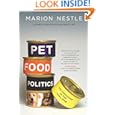Why public health matters
I received a couple of requests to define “public health” last week from readers Anthro and MA. As MA puts it,
Maybe…we need a definition of “public health.” I view my health as a private matter, my food choices as a private matter, and an expression of my freedom. To me, public health is not an individual concern, it’s a corporate (group) concern – government, schools, companies, farms, etc. Public health includes things like properly working sewer systems, sanitation, water quality, and air quality. Marion – can we get a definition of ‘public health’ from you, as Anthro suggested?
My definition of public health isn’t much different from mainstream definitions. But to me, public health is a critically important expression of democracy, and the antithesis of a “corporate” concern. Public health approaches promote good health for everyone, not just those who can afford it or are educated enough to make appropriate choices.
A standard definition such as the one given in Wikipedia, says that public health is about promoting health and preventing disease through societal choices and efforts. Public health deals with health at the population level, rather than at the level of individual personal responsibility, and it emphasizes prevention rather than treatment.
In my experience teaching public health nutrition, the concept of public health is sometimes hard for people to grasp, especially since populations are made up of individuals. I like to explain it this way: public health makes it easier for individuals to make healthful food choices for themselves and their families. Or to put it another way, public health makes better food choices the default.
The classic example of a public health intervention is water chlorination. As individuals, we could all boil our own drinking water to kill harmful organisms but this requires us to have stoves, pots, and fuel, and to know how to boil water. For many people, having to do this would be an intolerable burden and responsibility. Instead, some societies choose to take public health measures to ensure that drinking water is safe at the tap for everyone.
Other food examples: milk Pasteurization, banning of trans fats, food labeling.
The particular example that elicited the question has to do with food safety. We, as a society, could insist that food producers take measures to ensure that their products are free of harmful microorganisms (public health), or we could teach individuals how to manage food safety in the home or restaurants and cook foods properly (personal responsibility).
Preventing obesity is another example: We could, as a society, take measures to make it easier for people to eat more healthfully and be more active (public health) or leave it up to individuals to do this for themselves (personal responsibility). Many of the arguments about suggested public health measures to prevent obesity are about how best to balance society’s needs with individual rights. But as I see it, the proposals aim to tweak societal choices that have already been made: which crops receive farm subsidies, for example.
An exceptionally clear example is how to avoid toxic levels of methylmercury in fish. We can teach pregnant women to recognize which fish are high in methylmercury and hope this works well enough so they will avoid buying such fish (personal responsibility) or we could–as a society–require coal-burning power plants to scrub their emissions so mercury doesn’t get into ocean or lake waters in the first place (public health).
Obviously, both public health and individual approaches are necessary, but the overall objective of public health is to make it much, much easier for individuals to make better health choices without having to think about them.
Because public health applies to everyone, it is essentially democratic. And that’s one of the reasons why I think it matters so much.





